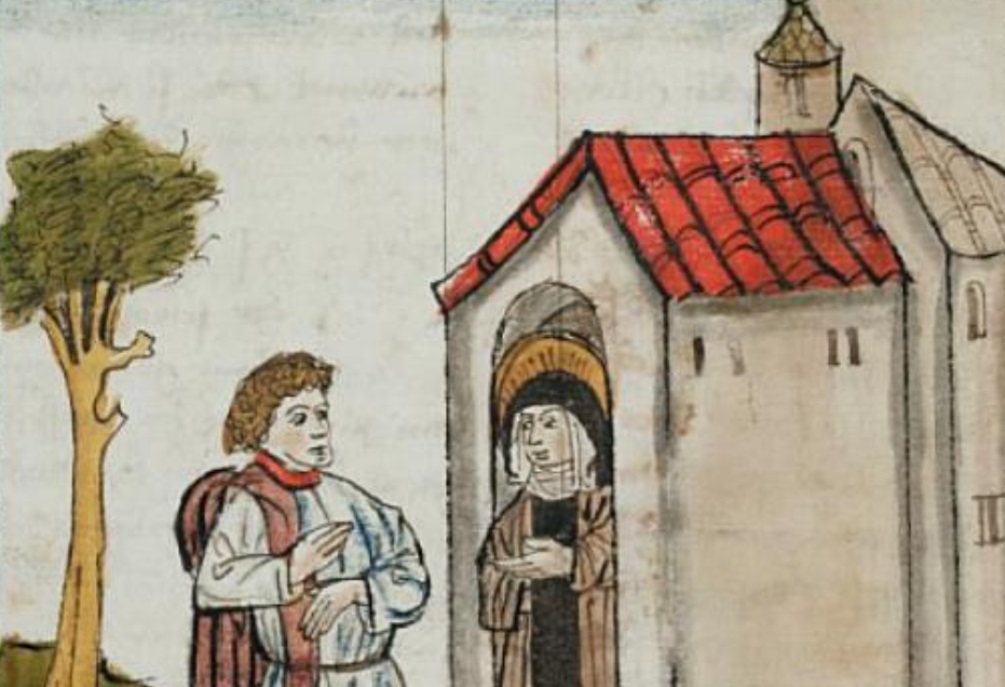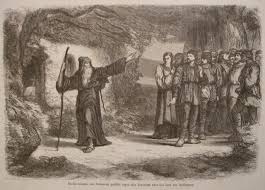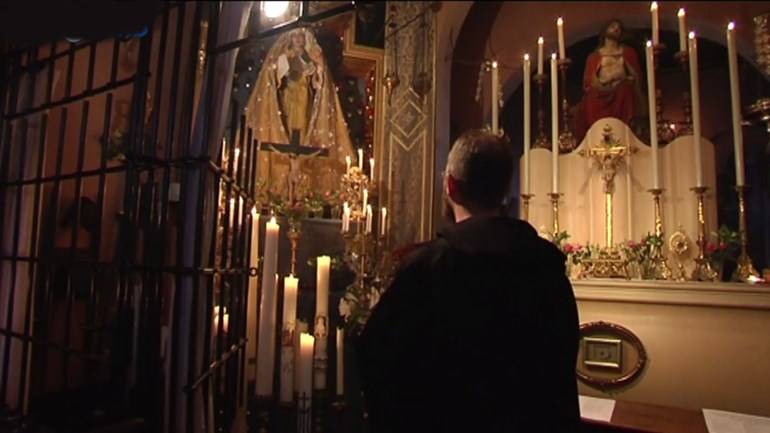Shut-ins
During these times of crisis, most of us have become shut-ins. But history shows that we are far from the only ones to stay indoors for an extended period of time. The most important recluse in Dutch art history is Symeon the Stylite, who is well-known thanks to a painting by the artist Carel Willink (see image). Symeon was a hermit who lived in the desert around 500 A.D. However, he was not completely alone. Admirers came in droves from far and wide, to ask for advice and get support. For Symeon it was all too much to bear, so he decided to start living on a pillar with a platform on top. To avoid the pushing and shoving of the ever-growing stream of pilgrims, the pillar was replaced multiple times by a taller one, finally reaching a height of between 12 and 18 metres. We can only guess as to how Simon dealt with personal hygiene and bowel movements. The point is he became very famous and even emperors made the journey to ask for his advice.
In the Middle Ages, many people in the Groningerland region lived in seclusion like Symeon. A person was called a recluse if they actively removed themselves from society and lived as shut-ins in a vault constructed against the side of a church. Abbot Emo van Wittewierum coined the term ‘incluse’ to describe these individuals, of which countless could be found in the city of Groningen alone. One example was a woman who entombed herself next to the Martinikerk church. We know about her thanks to a report written by the monk Caesarius of Heisterbach, a contemporary of abbot Emo who travelled to our neck of the woods from his monastery near the Rhine at Koblenz to perform an inspection in 1220. His visit took place exactly 800 years ago and the Martinikerk church, the Yesse convent and the University Library were planning a big exhibition to pay tribute to this part of Groningen history. Unfortunately, Covid-19 threw a spanner in the works. But let’s not focus on that right now.
Female recluses
Women in the Middle Ages did not have access to positions in the church and the men who did were often in fierce competition which each other for power in the hierarchy. The head of the church was and remains the Pope. For ambitious women, becoming a church shut-in was a very appealing idea. Although being entombed sounds a little scary, these women were revered by all and their role was very important. Congregants would visit her for a chat or to talk about their problems. People who had trouble sleeping would make their way to the vault, where they would be sure to find a sympathetic ear (see image). Caesarius also talks about a merchant who came into the possession of the famous relic of John the Baptist, for whom the St Jansstraat and St Jansbrug were named. He delivered the precious relic to the female recluse in secret, as she could be trusted not to punish him or betray him as the church officials would likely have done. Because, as we know, punishments in the Middle Ages were often severe.
Stitswerd
In the 21st century, the stunning village of Stitswerd is a tranquil oasis. This area was even more peaceful around the time when the famous shut-in of Stitswerd lived in his own vault, with the exception of the times when he would rant and rage (see image). For good reason though. The bishop of Bremen had called for a crusade against the Stedingers, Frisian farmers along the Weser river, who had proclaimed their own republic and refused to pay taxes to the church. The bishop ordered to have them all killed and expected the residents of Appingedam to join his cause. Of course they refused and they were promptly excommunicated, meaning no salvation and eternal damnation. A scary thought for people at the time. Only those who paid public penance, through torture and by appearing naked at a church service, would be granted mercy and be allowed back into the fold. Sounds like an episode of Game of Thrones, right? The Stitswerd shut-in disagreed with this practice and loudly shared his opinions on the matter. He was made to suffer as a result. Removed from his vault by a band of armed men, he was taken to the city of Groningen and forced to admit to various counts of blasphemy. He was barely able to avoid being burnt at the stake and was forced to spend the remainder of his days in Rottum in an underground hole. All contact with the outside world was strictly forbidden.
Friar Hugo
Present-day Groningen has its own shut-in, who has lived in seclusion since well before the coronavirus pandemic: friar Hugo, a recluse in Warfhuizen for eighteen years (see images). But, as he himself says, “I may be a little strange, but I’m also pretty normal. People expect shut-ins to be stick thin and stuck in a cave, with a skull for company, on top of which a candle burns and drips molten wax. Real life is different, as we mostly take care of pilgrimage churches, which involves a lot of hoovering and mopping. Friar Hugo starts his day at 03.45 every morning, by praying in silence for two hours. It’s his favourite time of the day, because of the peace and quiet. Just like Symeon the Stylite, Hugo has a steady stream of visitors. He says he sometimes gets busloads of Belgians at the same time.
Hugo is also a man of the 21st century, as he keeps a readable blog in Dutch entitled: Geruis uit de kluis (Sounds from the vault).
Vault
The University of Groningen Library has its own vault. During this coronavirus lockdown, the vault is firmly locked. Safely behind these closed doors is the manuscript of the Chronicle of Emo, entitled the Cronica Floridi Horti, that includes the history of the recluses, the Stedingers and the shut-in of Stitswerd.
| Last modified: | 08 May 2020 10.58 a.m. |






